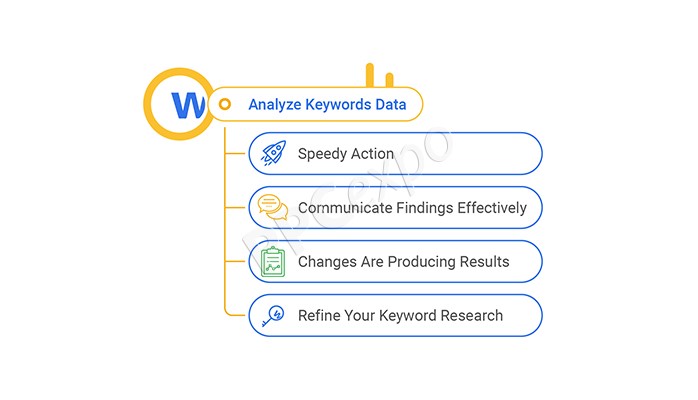Top Data Visualization Techniques and How to Best Use Them

Data visualization means a graphical representation of the information on a graph, chart, or map. There are a variety of data visualization techniques businesses can use to make complex data easy to understand. Data analysts nowadays create a custom data visualization technique rather than using the standard ones to narrate the story behind the data more effectively and interactively.
Furthermore, visualization is the core component of any business intelligence process, which many enterprises are looking at as an explosion for the need. Driven by various improvements by using the BI tools and the rise of data literacy.
With the plethora of data available in the business world, the challenges include interpreting the data. If the data is interpreted and represented effectively, it can provide valuable insights into the business growth. Moreover, data visualization techniques allow businesses and companies to understand more complex data sets by simply converting them into charts and graphs.
Some of the most common data analysis techniques are:
Know Your Targeted Audience:
This is one of the most overlooked aspects that is related to data visualization. So, while presenting the data in the charts and graph format, it is important to know your audience and understand your audience’s needs.
Set Your Desired Goals:
Your business is as effective as the strategies behind them, so it is important to set an aim and follow objectives before finalizing them into graphs, charts, and visuals. You should decide on the crucial data insights to share with the audience. One of the most effective ways is to set the KPI (key performance indicators of your ongoing campaigns.
Choosing Correct Visual Types:
Don’t confuse your audience with sophisticated graphics; instead, you should be familiar with various things to have an accessible and better understanding. For instance, a simple line graph shows the trend for years, while a pie chart represents the percentage of profit and loss.
Below are the top data visualization techniques and the best way to use them-
Line Chart
A line chart is such a data visualization technique that most people are familiar with. It is quite easy to understand, and the viewer can analyze it with just a glance. When you are analyzing numerical attributes over time, a line chart is better than the other chart types.
Line charts can be used for demonstrating the measures of the different attributes on colored points or curves, making it easy for the users to compare them quickly. The best way to use a line chart is to make it interactive so that the users can easily browse through the curves.
Pie Chart
A pie chart is a data visualization technique in which different percentages are represented through slices of a pie. While this chart type goes easy on the eyes, it doesn’t show the differences between the data like the other visualization techniques. Consequently, it could be a bit hard to make sense of the data.
When it comes to precision, a pie chart ranks low, and the users couldn’t compare data accurately. However, this chart type can be useful when you are trying to give a high-level message.
Scatter Plot
A scatter plot is another useful data visualization technique that is used to display the correlation or relationship between the two variables. Carefully created, well-designed scatter plots help you see the correlation between the complex set of data easily.
Thus, if you have two variables in a data set that pair well together, scatter plots come in extremely handy. You can quickly find out if there is a positive, negative, strong, weak, or null correlation between the variables.
Sankey Diagram
A Sankey diagram is a chart type widely used for representing data/processes flows through arrows and lines of different widths. This directed graph runs from left to right and demonstrates flows in a processor network.
You might find a Sankey diagram a bit overwhelming at first. Once you are familiar with it, you will find that it is very flexible and easy to use. Data visualization technique that can work well even if there are minor fluctuations in the data. It is increasingly used in almost every sector, including marketing, oil and gas industries, or wherever there is a need to show the cost, energy, or material flow.
Bar Chart
It is the simplest and most popular data visualization technique. The reason why most people love it is, you can easily compare the length of the bars. Rather than the curve shapes or color gradients. You don’t have to explain or train the viewers to help them understand the chart. It is such an easy technique that anyone with a basic knowledge of statistics can use it without any hassles.
Histogram
Histograms provide you with a great way to visualize the distribution of different values in a data set and make sense of the vast data. If you are a data analyst, you already know confusing and misleading averages are.
Suppose you are analyzing the average deal size in sales and there are many large deals. Here, a histogram comes in extremely handy to show the deals with different price ranges and compare them.
Histograms look similar to bar charts but designed to show data distribution. The only issue while using a histogram is, you need to make sure that the bins sized properly to convey the right information.
Conclusion
These are some of the top data visualization techniques that one can use by a data analyst or statistician to study the data. Make sure to know your target audience and get clear on your goals before you choose a data visualization technique. Organize the data well, make wise use of colors, and don’t forget to provide the users with an explanation to help them grasp the key findings. If you are using a Scatter plot or a Sankey diagram, you can highlight the most important areas of interest.
Read More: Mobile Technology Has Been So Vital





